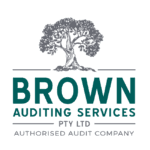The Importance of Quality Audit Evidence
Audit evidence includes all records, statements of facts and other information collected by an auditing firm as part of an audit assignment. Quality audit evidence allows a skilled auditing team to construct a detailed picture of the financial statements of a company and facilitate innovative decision making.
Audit evidence is often varied and falls into different categories. The key to any successful audit is for both parties to have a clear understanding of the types of evidence that ensure a meaningful audit. Listed below are a few examples of appropriate evidence.
Types of Audit Evidence
Documentation:
Written or electronic documentation is invaluable as a starting point. In the right hands, bank accounts, payrolls, asset registers and inventory balances are full of information and insight, provided they are accurately and efficiently maintained by businesses. Accomplished auditors determine the quality of documentation by rating how sufficient and appropriate it is.
Physical Examination:
Physical examination is evidence that is verified physically by an accounting or auditing team. In keeping with compliance norms, certain assets are verified and examined by the auditing team. By conducting a physical examination of the evidence, irregularities and accidental oversights can be taken into consideration.
Confirmations:
This involves the sending of circulars to third-parties. Recipients include banks, accounts payables, and receivables. Auditors confirm the closing balance recorded in financial statements based on these responses. Written confirmations of this nature are considered highly appropriate for accurate verification of bank balances, and accounts payable.
Oral evidence:
Auditors engage with a diverse range of information and sometimes, clarification is required to gain a better understanding of a company’s process. Co-operation from management is greatly appreciated in bridging gaps in knowledge that could prove important when putting together a final report. These inquiries are not considered a strong form of evidence but go a long way in providing an accountant useful context and information.
Accounting systems:
Internal accounting systems of the client are an invaluable source of audit evidence for auditors. Information related to financial records can be accessed through an electronic accounting system. A well-maintained system can provide auditors with a variety of useful data while carrying out their assignments.
Reperformance:
This is a process by which auditors can “re-enact” varied internal control processes to check for irregularities or errors. A bank or account receivables/payables reconciliation may be reperformed to evaluate accuracy and compliance of a transaction. This process also allows auditors to determine the control risk of a client.
Why Quality Audit Evidence Makes all the Difference
High-quality and detailed evidence of this kind is the key to a richly detailed, intricate accounting audit report. At Brown Auditing Services, we consider a good audit to be one of the most useful decision-making tools that an organisation can use. We believe that ambitious managers need motivated and passionate compliance firms to be their allies on the journey of business growth. Contact us today to know more.
